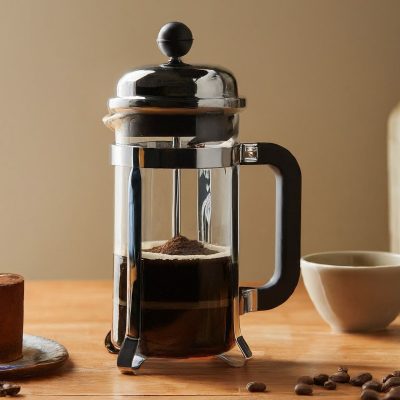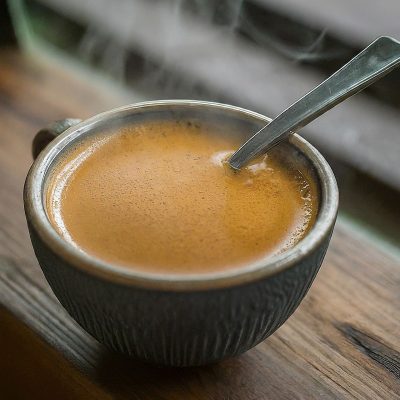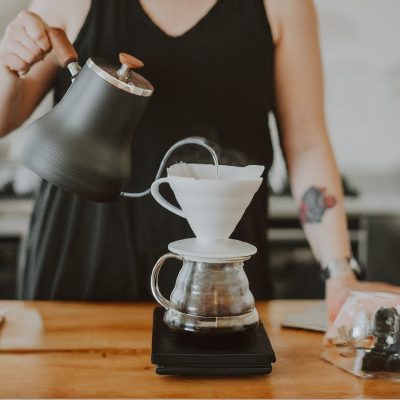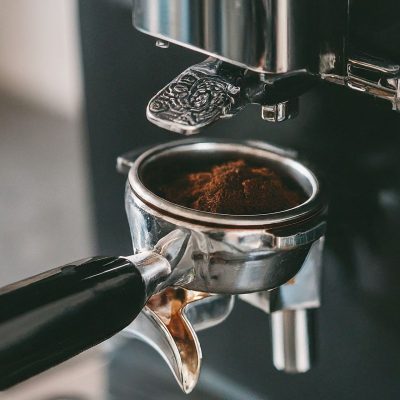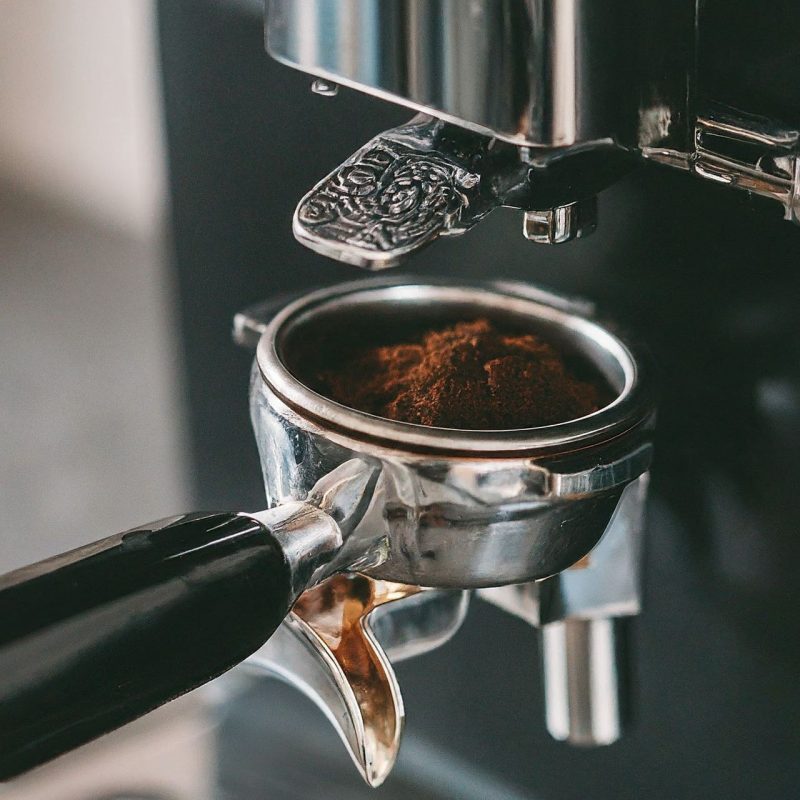Indonesia boasts a vibrant coffee culture that has significantly impacted the global coffee market. Known for its diverse coffee regions, the country offers a variety of unique and distinctive flavors, each reflecting the local environment and traditions. From the full-bodied and earthy notes of Sumatra to the bright and aromatic profiles of Java and the complex and fruity undertones of Sulawesi, Indonesia’s coffee regions contribute a wide array of tastes that cater to all coffee enthusiasts. This guide will delve into traditional brewing methods that honor Indonesia’s heritage, explore modern techniques that bring out the best in Indonesian coffee, and recommend top beans to elevate your coffee experience.
Best Indonesian Coffee Beans for Brewing
Indonesian coffee is a treasure trove of unique and captivating flavors. From the bold and earthy Sumatra to the smooth and full-bodied Java, and the balanced Sulawesi, each region offers a distinct coffee experience. Kopi never tastes right without truly Indonesian beans, for your taste preferences learn how to brew them.
H3: Sumatra Coffee
Sumatra, the largest island in Indonesia, is a coffee lover’s paradise. Sumatra’s soil is rich in organic matter due to the region’s dense tropical rainforests. The lower acidity of the soil helps produce beans with low acidity, resulting in a smooth, mellow taste with minimal brightness. Many coffee farms in Sumatra are situated between 1,000 and 1,500 meters above sea level, where the mountainous terrain provides excellent natural drainage, essential for healthy coffee plants. The tropical rainforest and consistent humidity foster the growth of beans renowned for their deep, earthy flavors, reminiscent of dark chocolate and spices. Growing at high altitudes with volcanic soil and abundant rainfall creates the perfect conditions for cultivating beans with a rich, full-bodied character.
Indulge in the intense aroma and bold taste of Indonesian coffee from Sumatra. Best enjoyed when brewed using the French press method, this Indonesian coffee is a true connoisseur’s delight. Imagine taking a sip and experiencing deep, chocolatey flavors, cedar, and a hint of smoke. The taste is robust and full-bodied, leaving a warm sensation on your palate. Sumatra coffee is perfect for those who appreciate a strong, flavorful cup that can stand up to milk or cream.
With its versatility and low acidity, Sumatra coffee can be enjoyed in various brewing methods. Whether you prefer a classic French press, a pour-over, or a cold brew, Sumatra beans will deliver a satisfying and flavorful cup. The coffee’s bold character pairs well with milk or cream, making it a perfect choice for lattes, cappuccinos, and other milk-based beverages.
H3: Java Coffee
Java, another iconic coffee-producing island in Indonesia, offers a diverse range of Indonesian coffee flavors that will tantalize your taste buds. From delicate and floral to full-bodied and earthy, Java showcases the versatility of Indonesian beans. The island’s distinct wet and dry seasons, combined with its rich volcanic soil, create the perfect environment for cultivating a wide array of Indonesian coffee profiles.
Indonesian coffee from Java is renowned for its complex and nuanced flavors. Whether you prefer a light and fruity cup or a bold and intense one, Java has something to offer. Some of the most famous coffee regions in Java include Ijen, Malabar, and Toraja. Each region has its own unique characteristics, resulting in a variety of flavors and aromas.
H3: Sulawesi Coffee
Sulawesi, the third major coffee-growing region in Indonesia, is a hidden gem for coffee enthusiasts seeking something truly exceptional. Grown at lower altitudes than Sumatra and Java, Sulawesi coffee often exhibits bright acidity and floral notes. The island’s diverse topography and microclimates contribute to the development of distinct coffee flavors, making Sulawesi a must-try for those who appreciate a more nuanced cup.
Sulawesi coffee is known for its earthy taste, clean, bright acidity, and floral aromas. It also has spice and herbal undertones, with hints of cinnamon, nutmeg, and herbal flavors. It’s a perfect choice for those who enjoy bold, earthy coffee with minimal acidity. Some of the most famous coffee regions in Sulawesi include Toraja, Mandailing, and Kalosi, each with unique characteristics, resulting in a variety of flavors and aromas.
In conclusion, Indonesia’s three major coffee-growing regions offer diverse flavors and aromas. Whether you prefer a bold and earthy Sumatra, a versatile Java, or a bright and acidic Sulawesi, there’s a coffee from Indonesia to suit your taste.
Traditional Indonesian Coffee Brewing Methods
Rooted in centuries of tradition, Indonesia’s coffee culture boasts unique brewing methods that have been passed down through generations. Two of the most iconic techniques, kopi tubruk and kopi luwak, exemplify the simplicity and richness of Indonesian coffee. These methods offer coffee enthusiasts a truly distinctive experience.
How to brew Kopi Tubruk at home
Kopi Tubruk is a traditional Indonesian coffee made by steeping coarsely ground coffee in hot water. The name “Tubruk” means “to collide,” referring to the forceful pouring of water over the grounds. This method extracts the coffee’s flavor while leaving the grounds intact.
Here’s the recipe for Kopi Tubruk
Ingredients:
Instructions:
-
Use a coffee scoop or tablespoon to measure out two tablespoons of coarsely ground Indonesian coffee. Place the measured coffee directly into the warmed cup or glass.
-
Carefully pour boiling water over the coffee grounds. The water should be just below the rim of the cup or glass.
-
Gently stir the coffee grounds and water together to ensure even distribution.
-
Allow the coffee to steep for 3-5 minutes, or until the grounds have settled at the bottom of the cup.
Optional: If you are a sweet lover, stir in a teaspoon or two of sugar to sweeten the coffee to your taste.
Enjoy:
Kopi Tubruk is best savored slowly, allowing the unfiltered grounds to contribute to its rich, full-bodied flavor. This traditional Indonesian brew offers a genuine taste of the country’s coffee culture.
Brewing Methods of Kopi Luwak
Besides Kopi Tubruk, another unique Indonesian coffee is Kopi Luwak. It’s made from coffee beans that have been eaten and excreted by civet cats. The name ‘luwak’ comes from the Indonesian word for civet cat. The unique flavor profile of Kopi Luwak is believed to result from the fermentation process in the civet cat’s digestive system. However, the production of Kopi Luwak has faced ethical concerns due to the treatment of civet cats in captivity.
Here’s the recipe for Kopi Tubruk
Ingredients:
Instructions:
-
Grind: Coarsely grind approximately roasted Kopi Luwak beans. A coarser grind helps to release the rich, earthy flavors that this unique coffee is known for.
-
Add Ground: Place the ground beans directly into a preheated cup or glass. Kopi Luwak is typically brewed unfiltered, so the grounds will settle at the bottom of the cup.
-
Pour Water: Gently pour 177 ml of boiling water (195-205°F) over the ground coffee. Ensure that the water fully saturates the ground to extract its distinct taste.
-
Steep: Let the coffee steep for 3-4 minutes, allowing the flavors to fully develop. The longer steeping time helps enhance the depth and complexity of the brew.
Enjoy: Once steeped, sip the coffee slowly, leaving the ground at the bottom. Savor the unique flavor profile of Kopi Luwak, which includes earthy, smooth, and slightly chocolatey notes. For a truly indulgent experience, pair Kopi Luwak with dark chocolate or a rich dessert.
Modern Brewing Techniques for Indonesian Coffee
Indonesian coffee offers a diverse range of brewing methods that showcase its unique flavors. Pour-over techniques highlight clarity, while the French press delivers a rich brew, and espresso offers intense flavor. Each method brings out distinct qualities of Indonesian coffee beans.
Pour-Over (V60 or Chemex): A Gentle Extraction
The pour-over method, using a V60 or Chemex, is an excellent choice for Indonesian coffee due to its ability to gently extract the subtle nuances of the beans. This technique is particularly well-suited for highlighting the brightness, sweetness, and delicate floral notes often found in Indonesian coffees from regions like Sumatra and Java.
Here’s a step-by-step guide to brewing Indonesian coffee using the pour-over method:
-
Grind: Use a medium-coarse grind, similar to sea salt, to ensure optimal extraction.
-
Preheat: Heat your pour-over cone, Chemex, and coffee mug with hot water to maintain a consistent brewing temperature.
-
Measure: Use a 1:16 ratio of coffee to water
-
Bloom: Pour hot water over the grounds to saturate them and release any trapped gases. Let it bloom for 30 seconds.
-
Pour: Gradually pour the remaining water in circular motions, ensuring even extraction. The total brew time should be around 3-4 minutes.
-
Enjoy: Once the coffee has dripped through, pour it into your cup and savor the complex flavors of Indonesian coffee.
By following these steps, you can experience the full potential of Indonesian coffee through the delicate and precise pour-over method.
French Press: A Robust Brew of Indonesian Coffee
The French press, a classic brewing method, is particularly well-suited for Indonesian coffee, especially for beans with deep, earthy flavors like those from Sumatra. Its immersion technique allows for a more robust and full-bodied cup by extracting additional oils and sediments from the coffee grounds.
Here’s a step-by-step guide to brewing the perfect cup of Indonesian coffee using a French press:
-
Grind: Use a coarse grind, similar to breadcrumbs, to avoid over-extraction. A coarser grind allows for more water contact, ensuring a balanced extraction.
-
Preheat: Warm the French press with hot water and discard it. This preheating helps maintain a consistent brewing temperature.
-
Measure: Use a 1:15 ratio of coffee to water (e.g., 30 grams of coffee to 450 grams of water). Adjust the ratio based on your desired strength.
-
Add Water: Pour hot water over the grounds, ensuring all the grounds are saturated.
-
Steep: Stir the coffee and let it steep for 4 minutes. For a stronger cup, extend the steeping time by an additional minute or two.
-
Press & Pour: Slowly press the plunger, ensuring a gentle descent to avoid disturbing the coffee grounds. Pour the coffee into your cup immediately to prevent any loss of heat or flavor.
By following these steps and incorporating these tips, you can create a rich, flavorful cup of Indonesian coffee using the French press method.
Espresso: A Concentrated Experience
Espresso offers a powerful way to savor the intense flavors of Indonesian coffee beans. This brewing method is particularly well-suited for beans from regions like Sulawesi, which often exhibit deep, bold notes.
Here’s how to create a perfect espresso shot with Indonesian coffee:
-
Grind: Use a fine grind, similar to table salt, to ensure optimal extraction. A finer grind allows for more water contact, resulting in a concentrated shot.
-
Measure: Weigh out 18-20 grams of coffee for a double shot. Adjust the amount based on your desired strength and the size of your portafilter.
-
Tamp: Distribute the grounds evenly in the portafilter and tamp them with consistent pressure. This creates a level bed of coffee, ensuring even extraction and a balanced shot.
-
Brew: Lock the portafilter into the espresso machine and brew for 25-30 seconds. Aim for a golden-brown crema on top of the shot, indicating a well-extracted espresso.
-
Enjoy: Savor the bold, complex, and sometimes smoky flavors of Indonesian espresso. The concentrated nature of espresso allows the unique characteristics of Indonesian coffee beans to shine through.
Whether enjoyed on its own or as part of a larger beverage, Indonesian espresso offers a concentrated and flavorful experience. By following these steps and experimenting with different beans and brewing techniques, you can discover the full potential of Indonesian coffee in this classic format.
Brewing Equipment Recommendations for Brewing Indonesian Coffee
Whether you prefer the delicate pour-over method or the robust French press, having the right equipment will ensure a satisfying and flavorful experience for your homemade Kopi

-
Brewing method: Choose a brewing method that suits your preferences and the desired flavor profile. Popular options include:
-
Pour-over: A V60 or Chemex is ideal for highlighting the delicate flavors of Indonesian coffee.
-
French press: The French press is suitable for extracting the full-bodied flavors of Indonesian beans.
-
Espresso: For a concentrated shot of Indonesian coffee, an espresso machine is necessary.
-
Scale: A digital scale is essential for accurately measuring coffee beans and water, ensuring consistent brew ratios.
-
Timer: A timer helps maintain consistent brewing times, which is crucial for achieving optimal extraction.
-
Thermometer: A thermometer is useful for measuring water temperature, as the ideal temperature for brewing coffee can vary depending on the brewing method and desired flavor profile.
Besides, you can consider some additions:
-
Gooseneck kettle: A gooseneck kettle is often used for pour-over brewing, as it allows for precise control over the pour.
-
Coffee tamper: If you choose to brew espresso, a coffee tamper is used to compress the grounds in the portafilter for even extraction.
-
Milk frother: For milk-based espresso drinks like lattes and cappuccinos, a milk frother is essential for creating a creamy texture.
With these essential tools and equipment, you’ll be well-equipped to brew delicious Indonesian coffee at home and explore the full range of flavors this unique coffee offers.
Conclusion
Experiment with different brewing methods to discover your preferred way to enjoy Indonesian coffee. Whether you prefer the clarity of pour-over, the richness of the French press, or the intensity of espresso, there’s a perfect brewing method for every taste.
